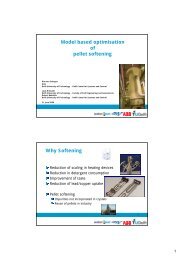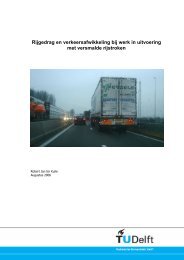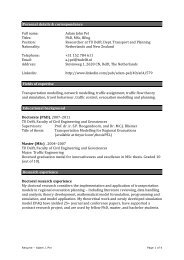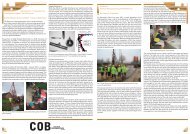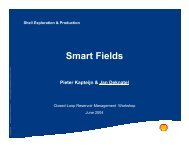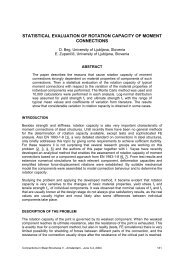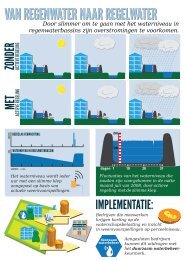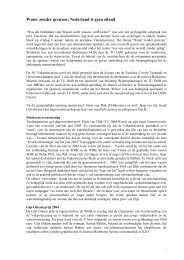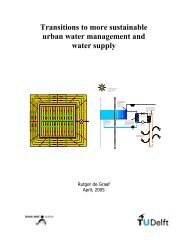Pedestrian route-choice and activity scheduling theory and models
Pedestrian route-choice and activity scheduling theory and models
Pedestrian route-choice and activity scheduling theory and models
You also want an ePaper? Increase the reach of your titles
YUMPU automatically turns print PDFs into web optimized ePapers that Google loves.
6.2. Activity order <strong>choice</strong><br />
S.P. Hoogendoorn, P.H.L. Bovy / Transportation Research Part B 38 (2004) 169–190 187<br />
Consider a sequence of two fixed-order activities, where <strong>activity</strong> 2 follows <strong>activity</strong> 1. Let A 1j <strong>and</strong><br />
A 2j denote the <strong>activity</strong> areas for activities 1 <strong>and</strong> 2 respectively. We hypothesize that a pedestrian<br />
will take into account both activities upon planning the <strong>route</strong>, i.e. in planning <strong>activity</strong> 1, he will<br />
consider that <strong>activity</strong> 2 will need to be performed afterwards. To this end, we first solve the <strong>route</strong><br />
<strong>choice</strong> problem for <strong>activity</strong> 2, yielding the expected minimum perceived disutility function W 2 ðt; xÞ.<br />
Secondly, the pedestrian plans the primer <strong>activity</strong> by determining the path that is stipulated by<br />
W 12 ðt; xÞ, which is a solution of the HJB equation<br />
o<br />
ot W 12ðt; xÞ ¼Hðt; x; rW 12 ; DW 12 Þ<br />
ð38Þ<br />
with boundary/terminal conditions<br />
W 12 ðt 1 ; xÞ ¼/ 12 <strong>and</strong> W 12 ðT 12 ; xÞ ¼W 2 ðT 12 ; xÞ U 1j ðT 12 Þ for x 2 A 1j <strong>and</strong> t < t 1 ð39Þ<br />
Clearly, the terminal conditions describe how the (optimal) cost W 2 of walking to the second<br />
<strong>activity</strong> area are considered by the pedestrian when walking from any location x to the first <strong>activity</strong><br />
area A 1j . The approach may be easily extended when a sequence of more than two activities<br />
have to be considered. Note that in most practical situations, the number of activities that pedestrians<br />
take into account during planning is generally limited.<br />
The case, where the order of the activities is not fixed is equivalent to solving two fixed <strong>activity</strong><br />
order problems <strong>and</strong> determining the minimum of W 12 ðt; xÞ <strong>and</strong> W 21 ðt; xÞ. At any location xðtÞ,<br />
minfW 12 ðt; xÞ; W 21 ðt; xÞg determines both the optimal direction <strong>and</strong> speed, as well as the optimal<br />
order of the activities 1 <strong>and</strong> 2. In case of three or more activities, we need to consider the minimum<br />
of all combinations of <strong>activity</strong> sequences. This implies that, although the approach is conceptually<br />
very straightforward, in practice the number of combinations can become very large.<br />
Conceptually, the inclusion of discretionary activities is equally simple. In illustration, consider<br />
the situation where <strong>activity</strong> 1 is m<strong>and</strong>atory, while <strong>activity</strong> 2 is discretionary. To determine the<br />
order of the activities as well as whether <strong>activity</strong> 2 will be performed or not, the pedestrian at xðtÞ<br />
will determine the minimum of W 12 , W 21 , <strong>and</strong> W 1 . If it turns out that if W 1 is optimal, <strong>activity</strong> 2 is<br />
skipped.<br />
7. Modeling pedestrian flow operations<br />
This article focuses on the behavior of pedestrians at the tactical level. Hoogendoorn (2001)<br />
describes how, given the planned <strong>activity</strong> schedule <strong>and</strong> <strong>route</strong>, pedestrian walking behavior can be<br />
described under the hypothesis that pedestrians aim to minimize the predicted cost of their behavior.<br />
The subjective disutility stems from cost incurred when deviating from the planned (i.e.<br />
optimal) path, discomfort caused by walking too close to (or even touching) other pedestrians <strong>and</strong><br />
obstacles, <strong>and</strong> frequent <strong>and</strong> severe acceleration <strong>and</strong> deceleration. The optimal behavior will<br />
represent a trade-off between these factors. Models are determined from this normative walking



